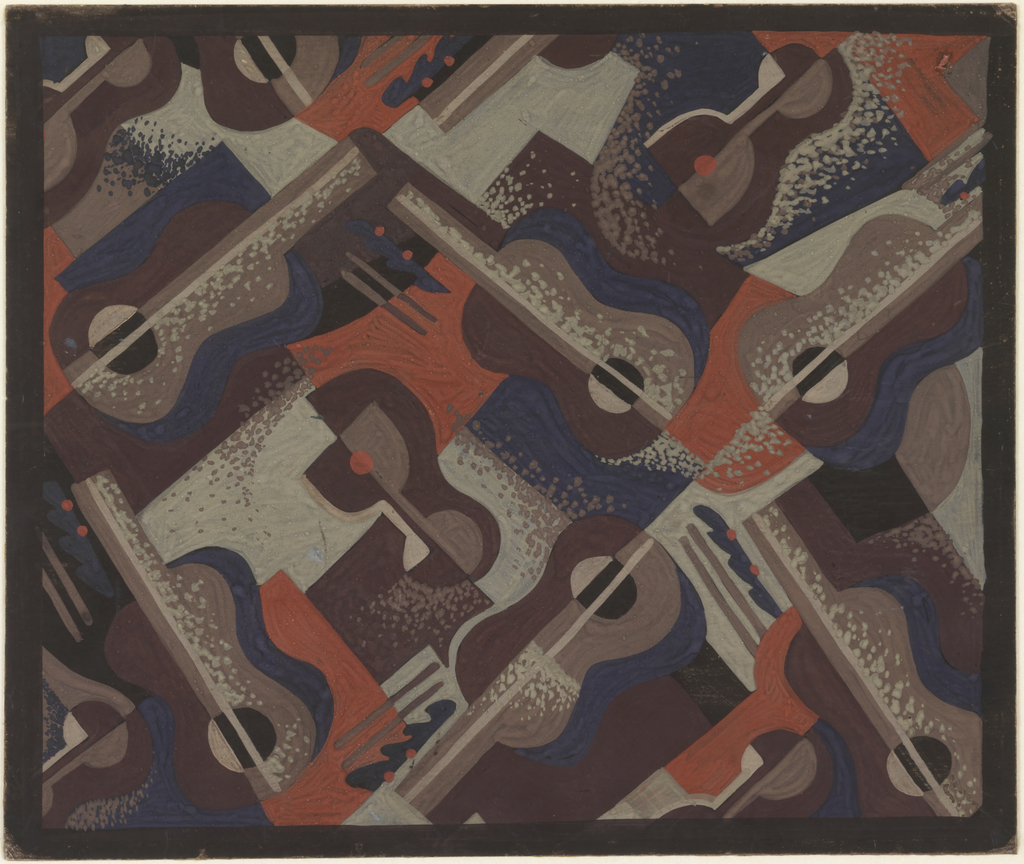Earlier this year, I had the great pleasure of working as a Fellow in the Drawings and Prints Department at Cooper-Hewitt, National Design Museum. Over the course of several months, I cataloged nearly 1000 drawings of interiors and furniture by the legendary American modernist, Donald Deskey. Sorting through drawing after drawing, I became intimately familiar with Deskey’s designs, which often employ industrial materials and avant-garde shapes and styles. This drawing, Radio City Music Hall: Carpet Design: Still Life with Violins and Wine Glasses, perfectly encapsulates Deskey’s modern aesthetic.
Deskey's approach was strongly influenced by the new European modernist principles he encountered while attending at the 1925 International Exposition of Modern Industrial and Decorative Arts in Paris and visiting the Bauhaus in Germany. Initially, Deskey experimented with these ideas at his company, Deskey-Vollmer, Inc., during the late 1920s. Most European modernist works, however, were made with expensive materials and labor-intensive procedures. These were characteristics that Americans were reluctant to embrace in the wake of the Depression. By the early 1930s, Deskey had struck out on his own and revised his approach. He made his designs more affordable and appropriate by adapting nontraditional materials, such as cork, aluminum, and steel, into his furniture and interiors. In 1932, he was awarded the commission to complete the interiors of Radio City Music Hall (RCMH)—the first public commission to feature these unlikely materials.
Although we now consider the interiors of this landmark theater to be a great achievement in the history of design, project manager Samuel “Roxy” Rothafel originally envisioned a more traditional rococo style. Deskey, a strong proponent of modernism, met Rothafel halfway by designing an interior in a style he called, “modern rococo.” Aluminum wallcoverings, whimsical modern patterns, and furniture made of Bakelite and tubular steel graced the halls, lobbies, and powder rooms of the theater.
Still Life with Violins and Wine Glasses suggests the spirit of merriment and the thrill of entertainment that one would uncover at RCMH. The cubist-inspired forms of abstracted violins and wine glasses reference Europe's influence on Deskey’s modernism, while the style remains wholly American in its jazz-age theme. Other exuberant Deskey designs at RCMH include a cigarette-patterned wallpaper in the men’s smoking lounge and the Singing Women carpet pattern. Most—if not all—of Deskey’s modern interiors with complete furniture no longer exist. Deskey’s interior designs for RCMH are rare and outstanding examples of an American modernism that adapted to its time and optimistically looked toward the future.
